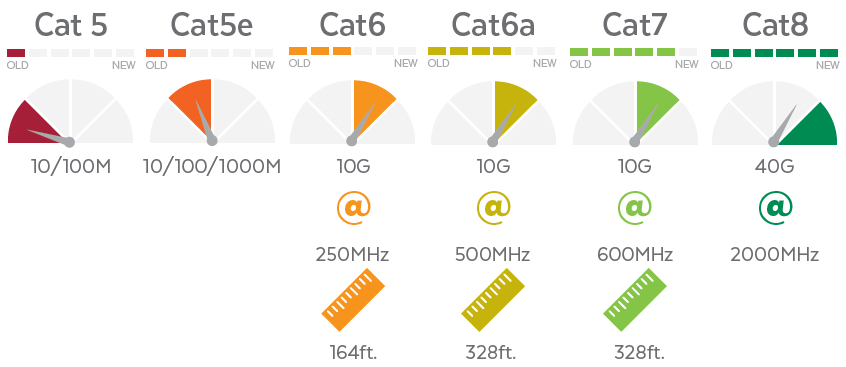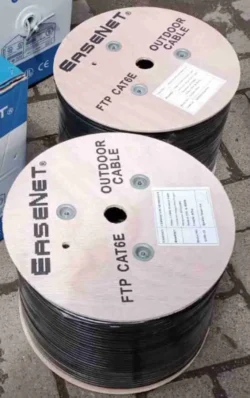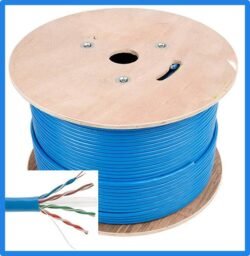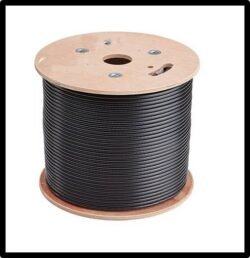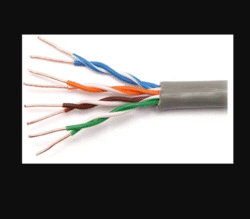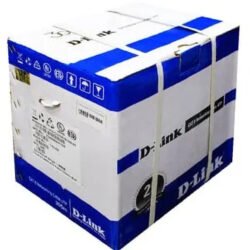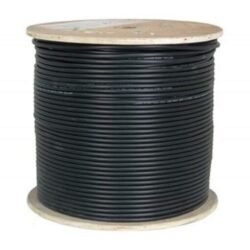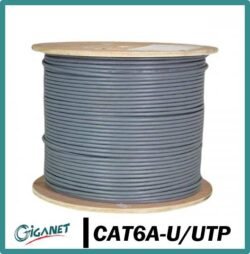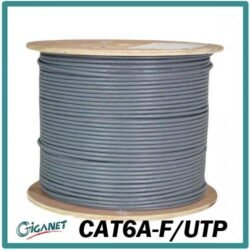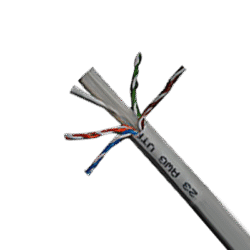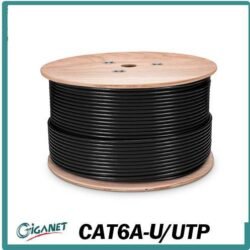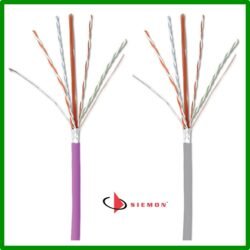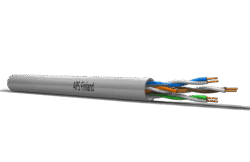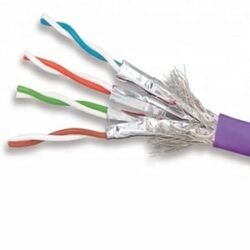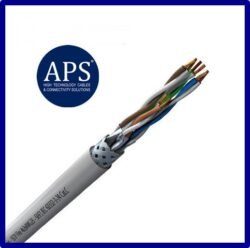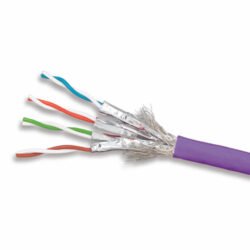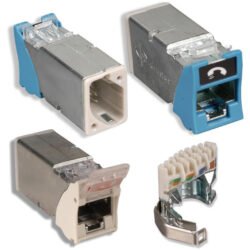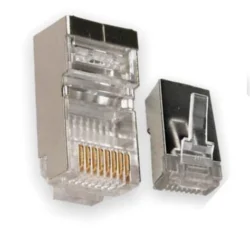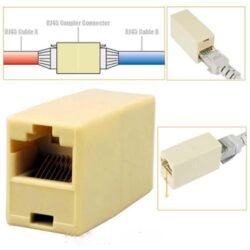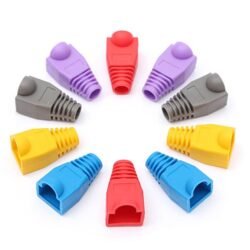In-depth Cat6 vs Cat6a vs Cat7: What’s the Difference?
Choosing the appropriate Ethernet LAN cable is paramount to achieving reliable, high-speed data transfer in modern networks. Category 6 (Cat6), Category 6A (Cat6a), and Category 7 (Cat7) cables are commonly used for high-performance environments such as homes, businesses, and data centers. Understanding their differences in performance, shielding, installation, and applications will empower you to make the best choice for your network.
Key Differences summary
| Feature | Cat6 | Cat6a | Cat7 | Cat8 (Bonus) |
| Max Speed | 10 Gbps (55 m) | 10 Gbps (100 m) | 10 Gbps (100 m) | 25/40 Gbps (30 m) |
| Bandwidth | 250 MHz | 500 MHz | 600 MHz | 2000 MHz |
| Shielding | UTP or optional STP | Typically shielded (FTP/STP) | Fully shielded (S/FTP) | Fully shielded (S/FTP) |
| Connector | RJ45 | RJ45 | GG45 / TERA | RJ45 |
| Flexibility | High | Moderate | Low | Low |
| Typical Use | Home, small office | Business, data centers | High EMI environments | Data centers, HPC |
| Pricing Cost for Ethernet cables
click for indpepth overview
|
Low | Moderate | High | Very high |
Full Cat6 Overview
Cat6 cables have become the backbone of many gigabit networks worldwide. These cables support data transmission speeds of up to 10 Gbps, but only reliably for cable lengths up to about 55 meters. Operated at a frequency bandwidth of 250 MHz, Cat6 offers substantially less crosstalk and interference than earlier standards like Cat5e.
Cat6 cables generally come as unshielded twisted pair (UTP), making them flexible, lightweight, and easy to install. This flexibility and affordability make Cat6 a popular choice for home networks and small office setups where cable runs are typically short.
However, Cat6’s lesser shielding compared to Cat6a or Cat7 means it is more susceptible to electromagnetic interference (EMI), which can degrade signal integrity in electrically noisy environments.
Full Cat6a Overview
Cat6a, or “augmented Cat6,” is an enhanced version designed to overcome Cat6’s distance and interference limitations. Cat6a cables meet standards for 10 Gbps transmissions up to 100 meters and operate at a doubled frequency bandwidth of 500 MHz.
A defining characteristic is their prevalent use of shielding, either around individual twisted pairs (FTP) or the entire cable (S/FTP), which significantly improves resistance to EMI and alien crosstalk — interference originating from adjacent cables.
Though their thicker jackets and shielding make Cat6a cables less flexible and more expensive than Cat6, these cables provide stable, high-speed connections at longer distances, making them ideal for enterprise networks, data centers, and any installation where performance and noise immunity are critical.
Cat7 Overview
Cat7 cables represent further advancements in shielding and bandwidth, operating at frequencies up to 600 MHz while still supporting 10 Gbps speeds up to 100 meters. They feature individually shielded twisted pairs enclosed within an overall shield (S/FTP), delivering superior protection from EMI and crosstalk. This makes Cat7 cables optimal for environments with significant electrical noise or where maximum signal integrity is required.
Cat7 uses specialized connectors such as GG45 or TERA rather than the common RJ45, which can limit compatibility without adapters and complicate installation. These cables are thicker and the least flexible among the three, often reserved for high-end data centers or mission-critical enterprise applications.
Electromagnetic Interference and Cable Shielding Explained
Electromagnetic interference (EMI) refers to unwanted electrical signals that can corrupt data transmission over network cables. Sources include electrical motors, fluorescent lamps, power lines, wireless signals, and industrial equipment. EMI manifests as noise, which reduces signal clarity and network reliability.
Shielded cables mitigate EMI through layers of conductive material — foil or braided copper — surrounding the signal conductors, forming a Faraday cage that reflects or absorbs disruptive electromagnetic waves. The shielding types include:
- Foil Shield (FTP): Thin aluminum foil that blocks high-frequency EMI but less flexible.
- Braided Shield: Woven copper strands offering mechanical strength and low-frequency EMI protection.
- Combination Shield (S/FTP): Foil plus braid for broad spectrum EMI defense.
Unshielded cables (UTP) lack these protective layers, making them more susceptible to interference but easier and cheaper to install.
Proper installation of shielded cables requires grounding the shield at one or both ends to safely divert interfering currents and preserve signal quality. Without appropriate grounding, shielding can cause ground loops and degrade performance.
Installation Tips and Challenges
Cat6 (Unshielded)
- Easy to bend and pull through walls or conduits.
- Minimal special handling required.
- Less protection means cable routing should avoid EMI sources like electrical wiring.
Cat6a (Often Shielded)
- Thicker and less flexible than Cat6, demanding careful bending respecting manufacturer’s minimum bend radius.
- Shielding requires proper grounding and use of shielded connectors (STP/FTP variants).
- Handling and terminating shielded cables need more skill and special tools to maintain shielding continuity.
- Susceptible to damage if bent or crushed, risking performance decrease.
Cat7 (Fully Shielded)
- Thickest and most rigid, challenging tight bends and confined spaces.
- Requires specialized connectors (GG45, TERA) or adapters.
- Installation is complex due to cable diameter and shielding requirements.
- Best suited for new installations where cables can be run in open trays or conduits without sharp bends.
Proper planning of cable runs, adherence to grounding rules, and professional or knowledgeable terminations are crucial to leverage shielding benefits and avoid signal issues.
Real-World Use Case Examples
- Home Network: Cat6 cables efficiently support gigabit and short-range 10GbE for internet, streaming, and gaming within a typical home with minimal EMI.
- Office or Small Business: Cat6a shielded cables reduce interference from numerous electronic devices and longer cable runs between floors or buildings, ensuring reliable 10GbE connectivity.
- Data Center: Cat7 cables safeguard data integrity amid dense cabling and electrical equipment, delivering robust 10GbE or higher speeds with minimal crosstalk.
- Industrial Facility: Shielded Cat6a or Cat7 cables prevent high EMI noise from heavy machinery and motors from disrupting critical control systems and communications.
Connectors and Backward Compatibility
- Cat6 and Cat6a: Use standard RJ45 connectors, widely compatible with most networking equipment, making upgrades straightforward.
- Cat7: Employs GG45 or TERA connectors which are backwards compatible with RJ45 through adapters but are less common and more costly.
- Cat6a and Cat7 require compatible shielded connectors for shielded cable types to maintain EMI protection.
- All three cables are generally backward compatible with older standards like Cat5e but operate at lower speeds accordingly.
Future Ethernet Standards: Cat8 and Beyond
Cat8 cables are the emerging high-performance standard, designed for data centers, supporting speeds up to 25 to 40 Gbps over shorter distances (up to 30 meters). They operate at frequencies up to 2000 MHz with stringent shielding requirements.
While Cat8 is unlikely to be necessary for typical home or business networks soon, its introduction points toward increasingly demanding network environments where ultra-high speed and extreme EMI protection will be required.
Buying Guides and Quality Considerations
When purchasing cables, choose cables certified by recognized standards organizations (TIA/EIA, ISO/IEC) to ensure performance claims.
Consider:
- Cable Category and length requirements.
- Shielding type based on environmental EMI conditions.
- Compliance with local electrical codes.
- Flexibility and installation environment (e.g., indoor/outdoor, plenum-rated for air-handling spaces).
- Reputable manufacturer offering warranties and quality assurance.
Avoid very cheap, uncertified cables as they may fail to deliver advertised speeds and degrade over time.


